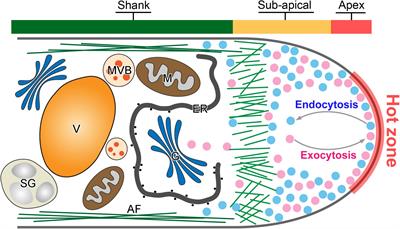EDITORIAL
Published on 25 Feb 2021
Editorial: Regulation of Pollen Tube Growth
doi 10.3389/fpls.2021.658902
- 1,775 views
- 1 citation
9,440
Total downloads
81k
Total views and downloads
Select the journal/section where you want your idea to be submitted:
EDITORIAL
Published on 25 Feb 2021
ORIGINAL RESEARCH
Published on 10 Feb 2021

ORIGINAL RESEARCH
Published on 14 Jan 2021

REVIEW
Published on 20 Oct 2020

MINI REVIEW
Published on 06 Oct 2020

ORIGINAL RESEARCH
Published on 08 Jul 2020

PERSPECTIVE
Published on 03 Jul 2020

ORIGINAL RESEARCH
Published on 30 Jun 2020

